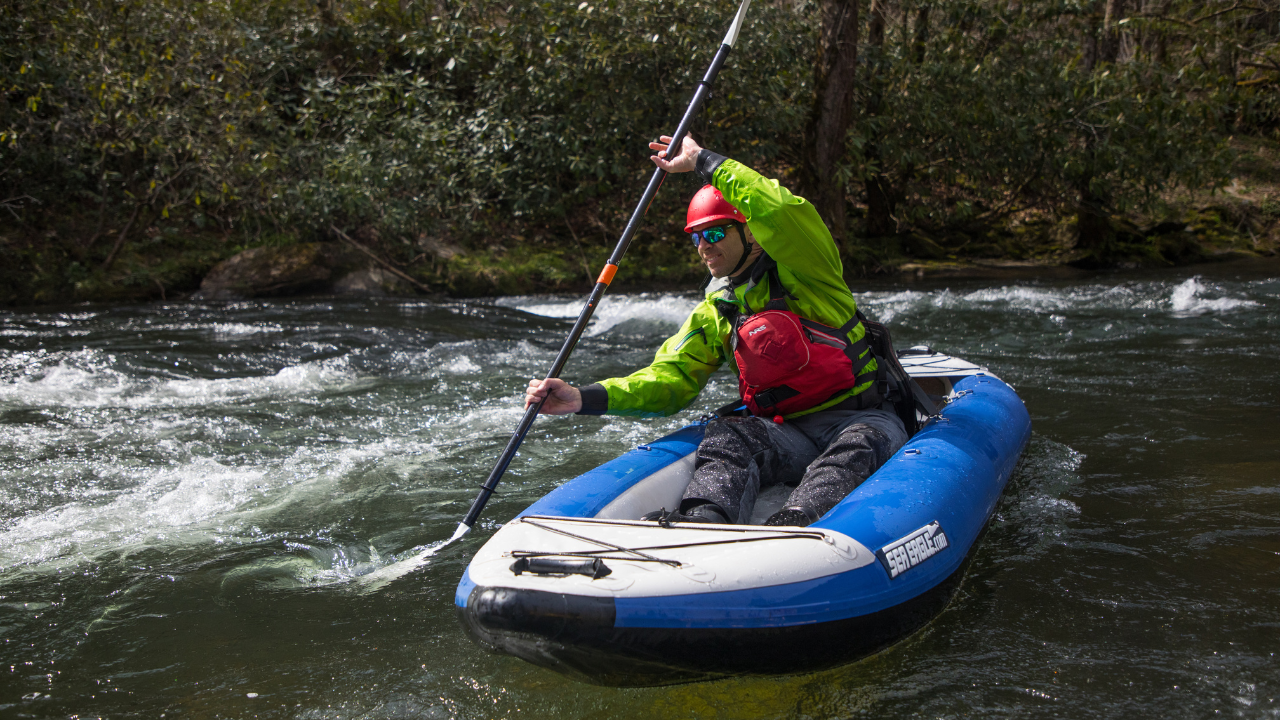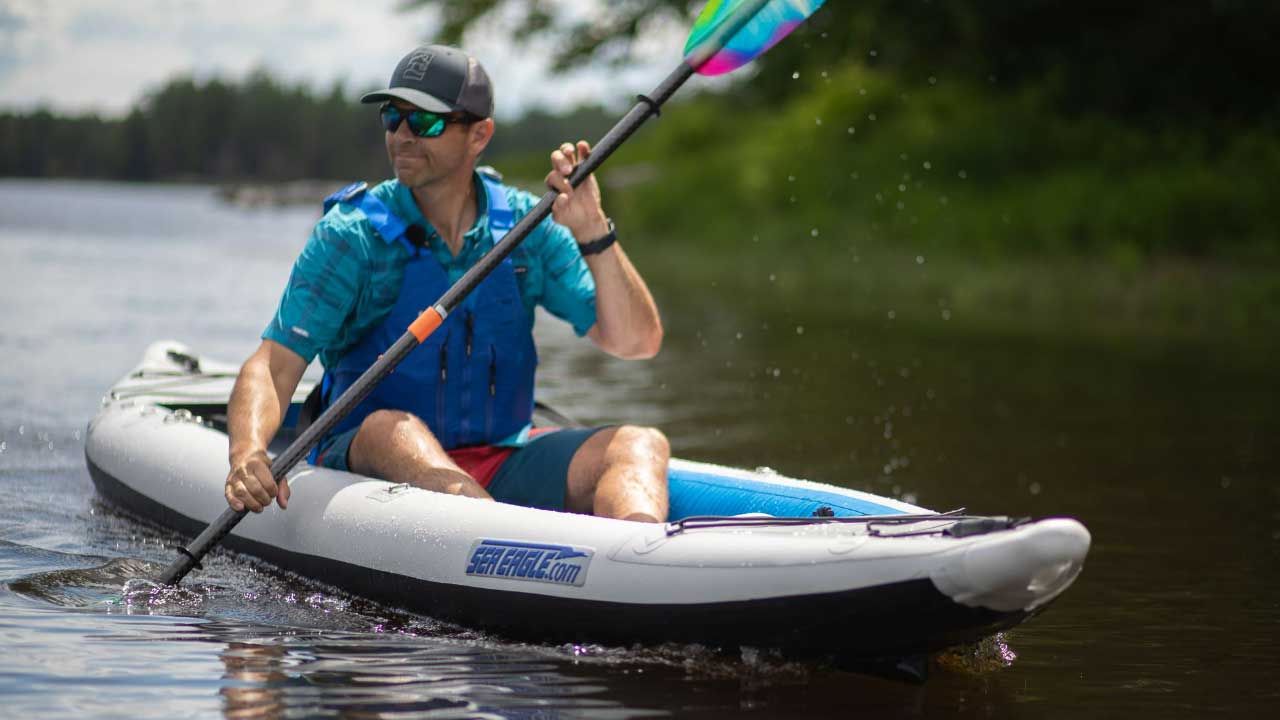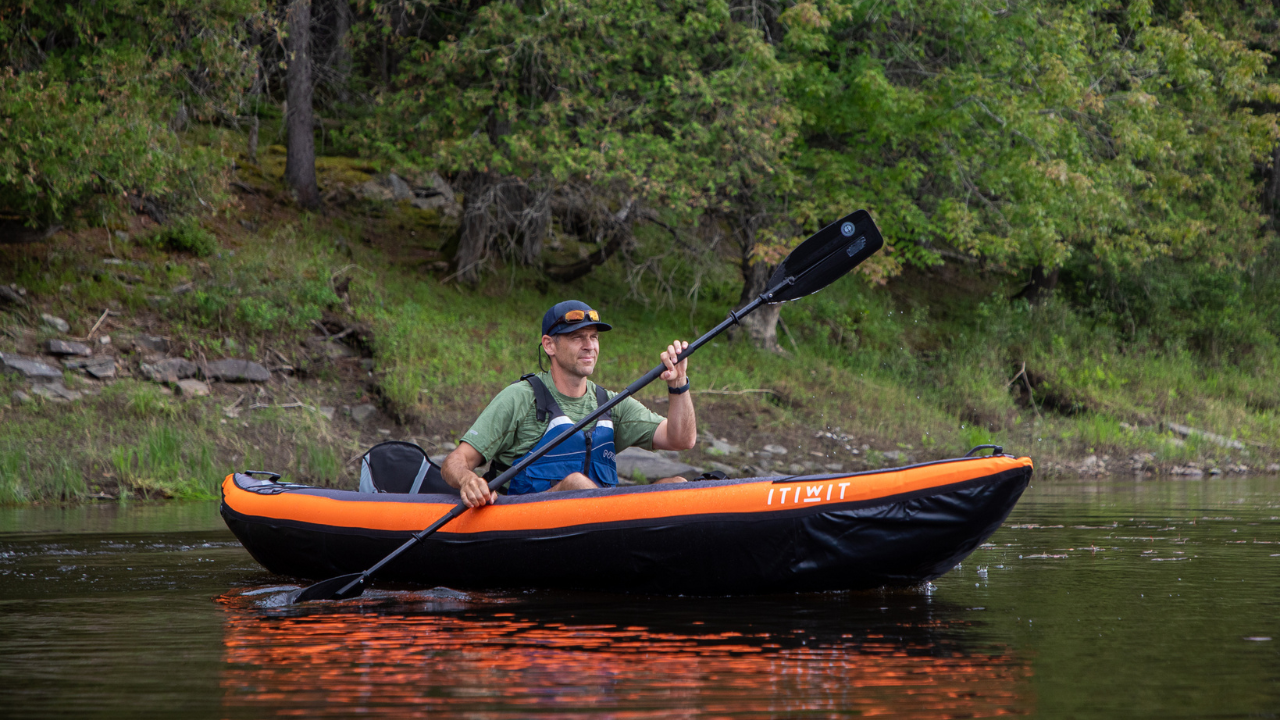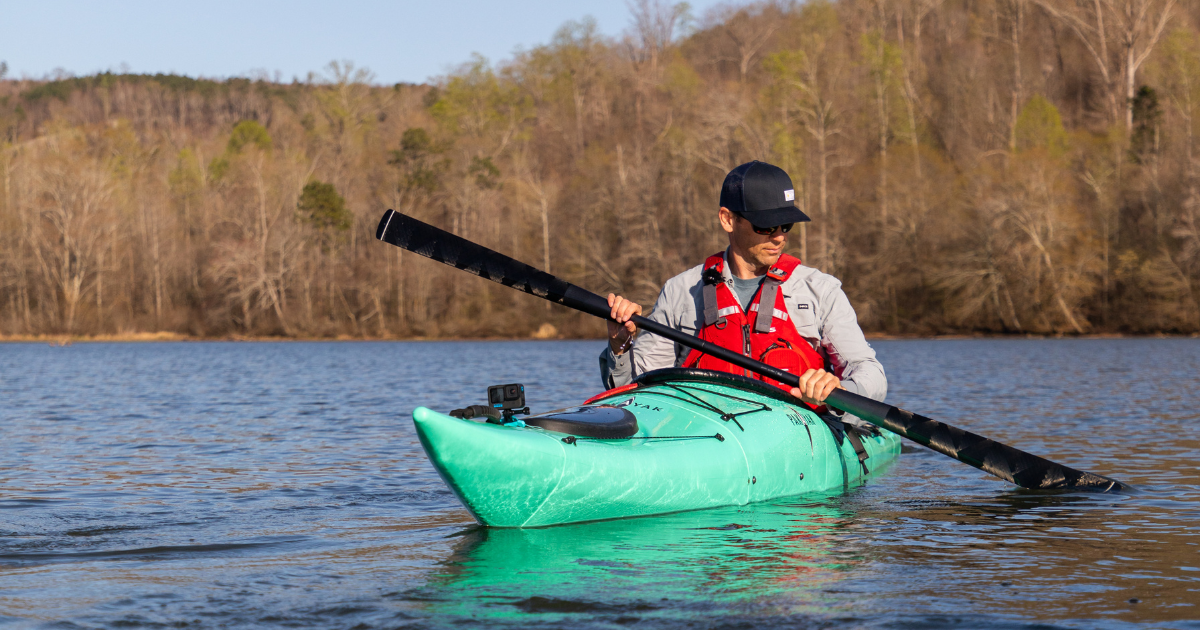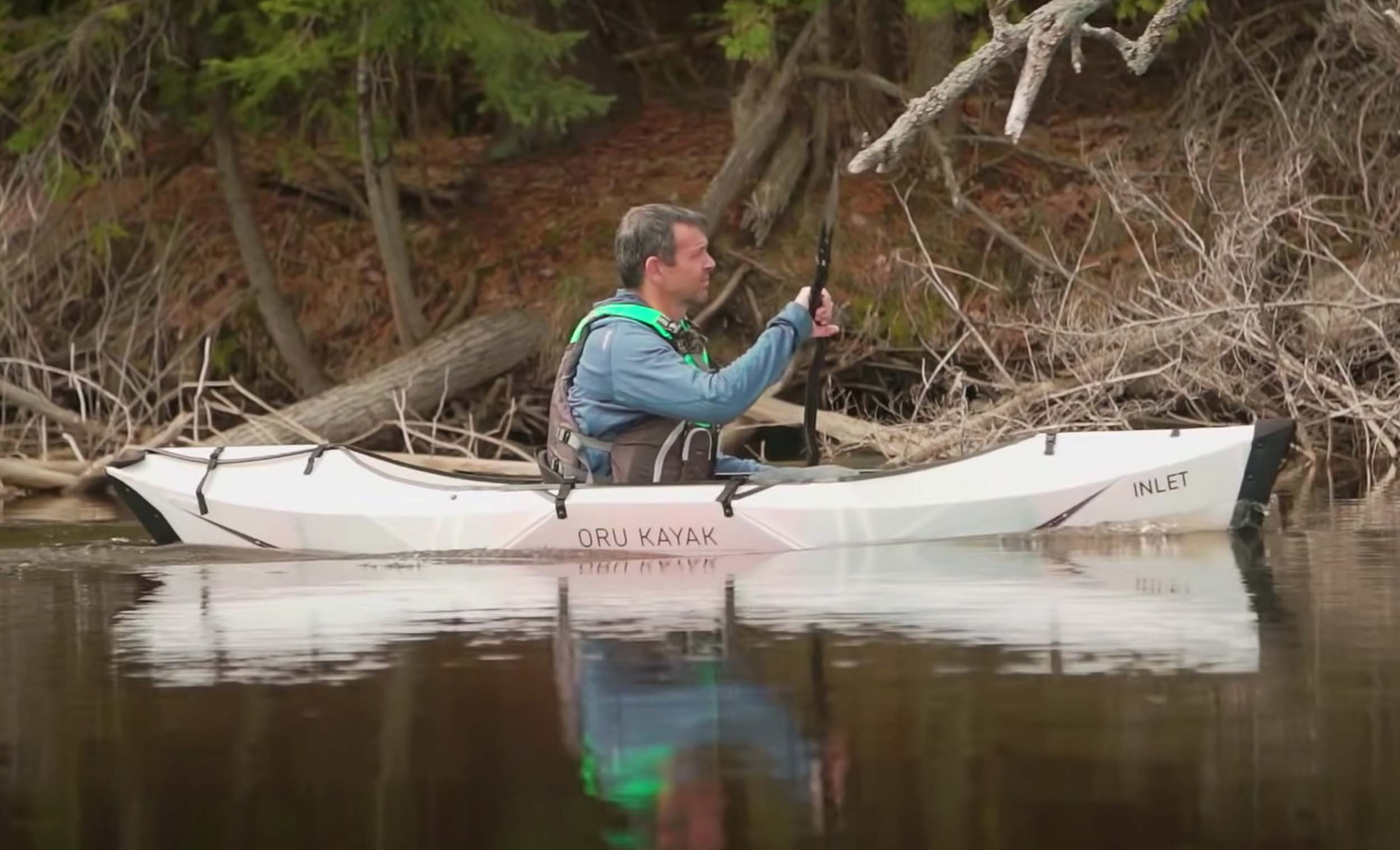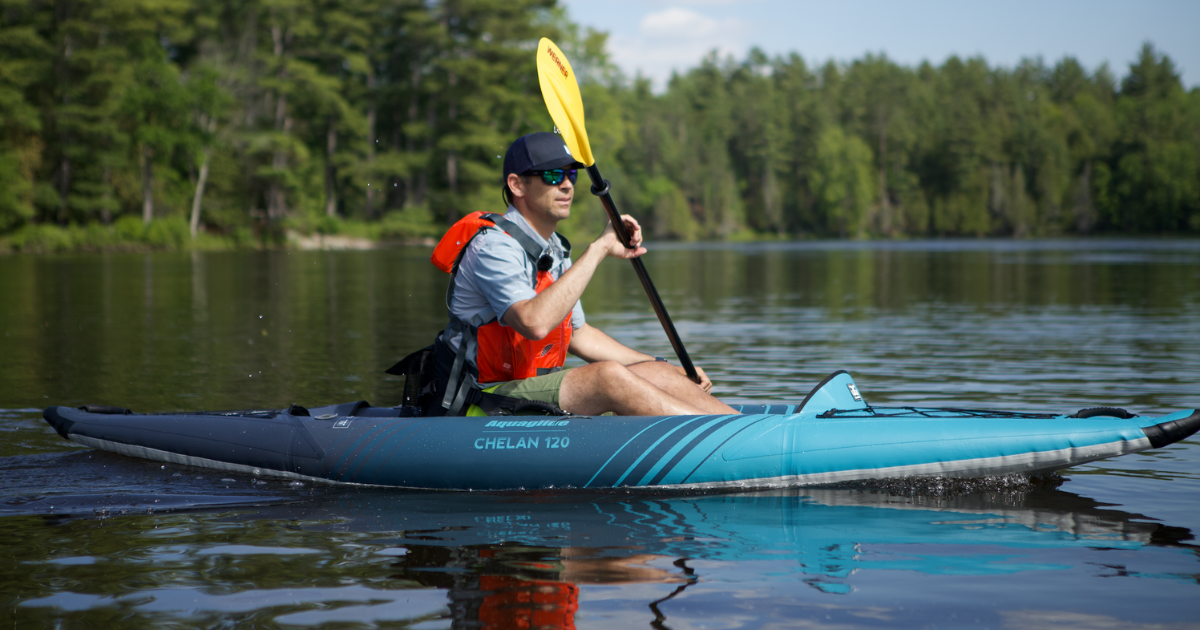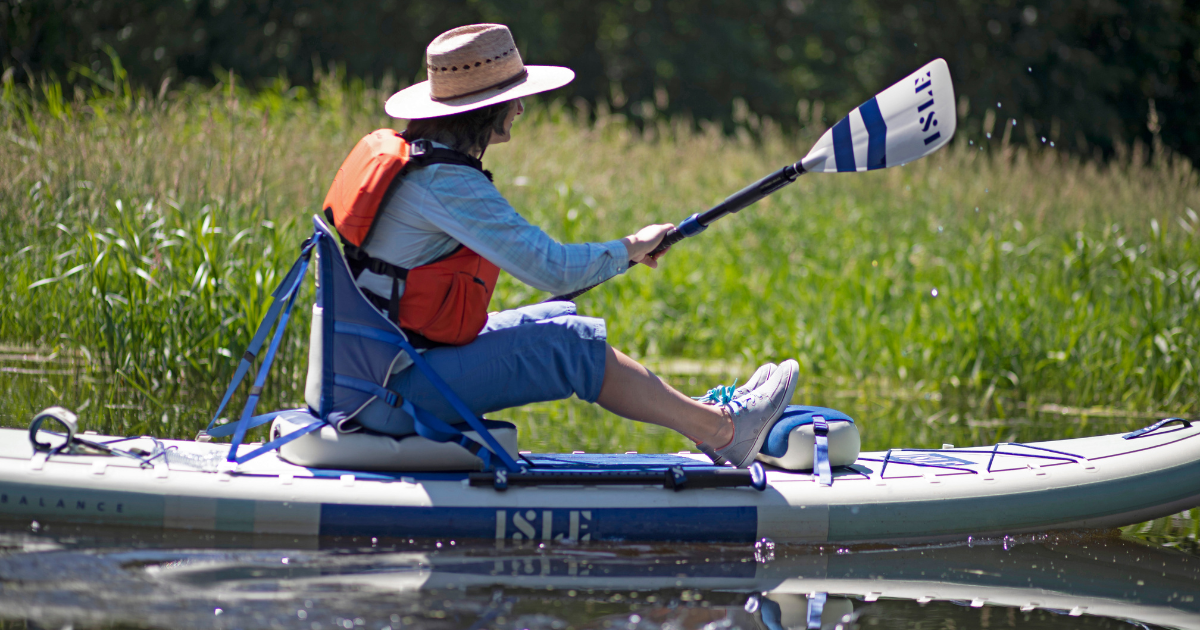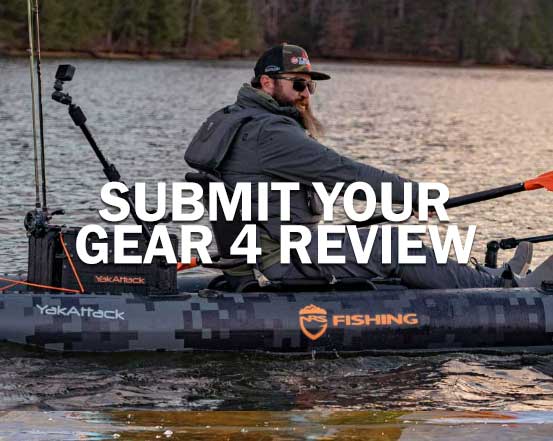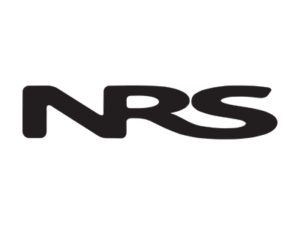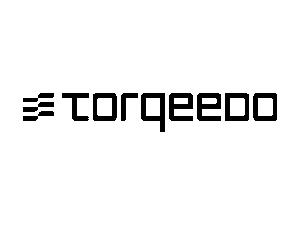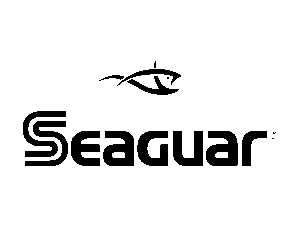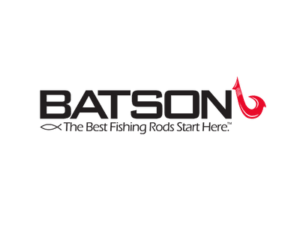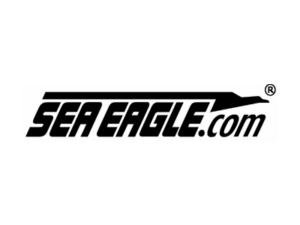Aqua Bound has been crafting world-class paddles for over three decades. Their best-selling lineup, the Ray Series, just so happens to be a favorite of mine, and so I was stoked to take the new designs out for a spin. Now, right off the top, I need to be upfront and tell you that Aqua Bound is a sponsor of my Paddle Tales adventure series.
But it's also important to know that I've been using their paddles for 25+ years — back when I was competing in whitewater kayaking and loooong before I ever got in front of a camera. So while it is easy for me to fawn over these paddles, it still remains my goal to give you a genuine sneak peak into a series that has received its first overhaul in quite some time. Let's break it all down so that you can know what to expect.
An Overview of Aqua Bound's Ray Series
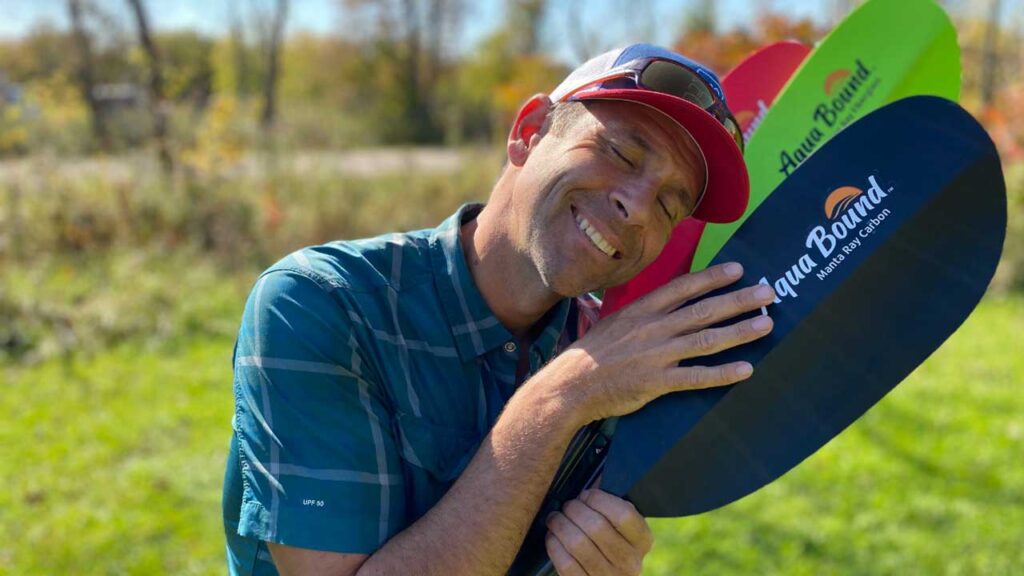
When Aqua Bound launched the Ray Series kayak paddles, they quickly made a splash because they combined three important attributes: affordability, durability, and performance.
Aqua Bound Ray Series Kayak Paddle Cost
When I say affordable, I don't mean that these paddles aren't a significant investment, but with a price range of between $130 to $250 (USD), this is relatively inexpensive when compared to the rest of the high-end paddle market.
A paddle in this price range, that also has a proven track record of durability and performance, is a perfect trifecta when looking for a great kayak paddle.
Another reason Aqua Bound's Ray Series ranks high in my books is because it includes three different options for paddle composition:
- Fiberglass Kayak Paddles: 100% fiberglass shaft and fiberglass-reinforced nylon blades (least expensive)
- Carbon Kayak Paddles: 100% carbon shaft and carbon-reinforced nylon blades (most expensive)
- Hybrid Kayaking Paddles: 100% carbon shaft and a fiberglass-reinforced nylon blade. The hybrid paddle splits the difference in terms of price and performance benefits.
Manta Ray vs Sting Ray Paddle Blade Sizes
These models also have the option of two blade sizes to choose from. There is the Manta Ray, which is wider and therefore best for larger paddlers and/or more aggressive paddling; and then there is the Sting Ray, which is longer/narrower and better suited for smaller paddlers and/or a more relaxed paddling style.
The three main models and two blade shapes are the same offerings now as they were in previous generations. What has changed are some subtle performance upgrades to the blade designs (more on that in a minute), a slick new ferrule design, and it's hard to miss the two new snazzy color options: electric green and sunset (along with classic black).
Ray Series Design Upgrades
1. New Ferrule Option
One of the things that excited me the most about the updated Ray series was the introduction of the new Versa-Lok ferrule. For quick reference (but keep reading for more info on ferrules in general), Aqua Bound has used, and continues to use, a basic snap-button system on their fiberglass paddles, and a Posi-Lok ferrule on some of the carbon and hybrid paddles (which allows for an infinite number of feather/twist options and locks in beautifully).
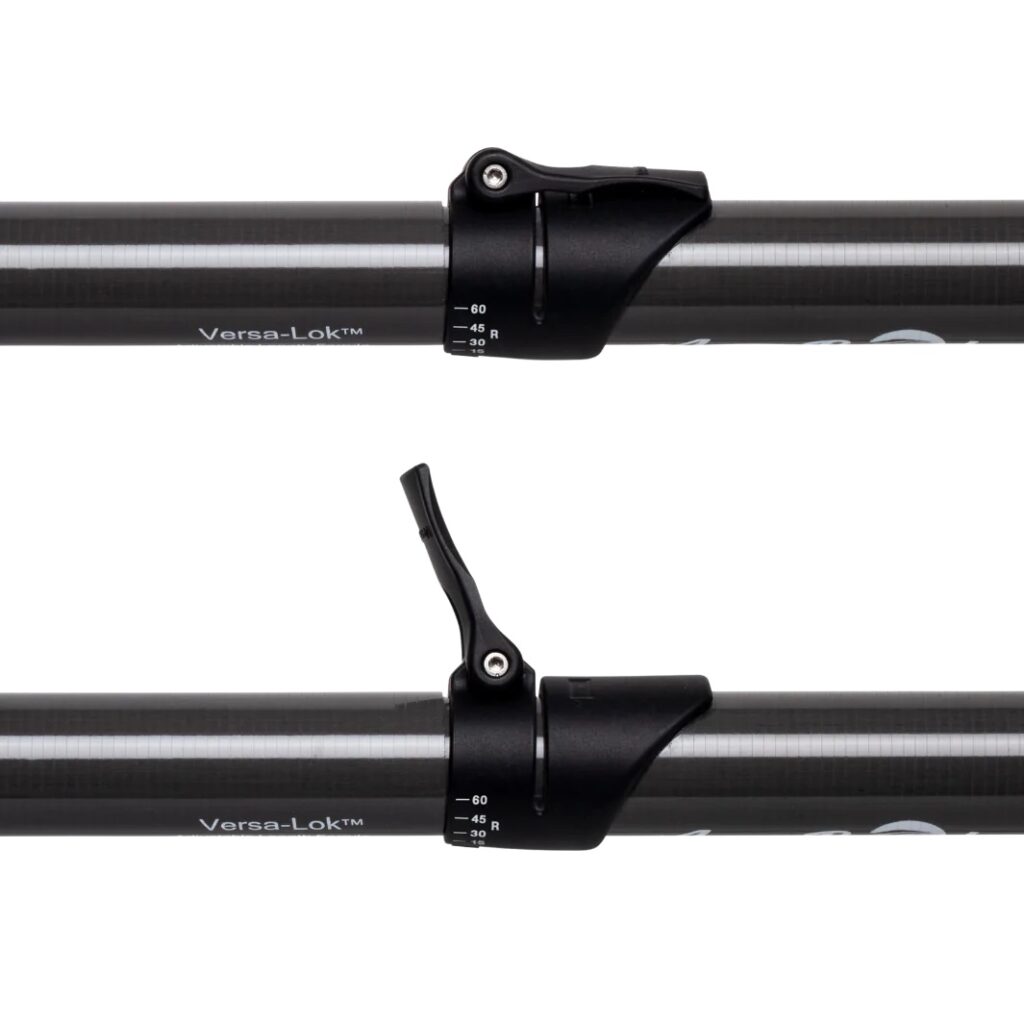
How to choose kayak paddle length
The joy of the new Versa-Lok, which also features in some hybrid and carbon models, is that it performs the same functions as the Posi-Lok, plus it allows for length adjustments of up to 15 centimeters! This means you don't have to worry about choosing the correct kayak paddle length as a new paddler. This telescoping ferrule is great for anyone who doesn't know exactly what length of paddle they want, for sharing a paddle with friends/family, and for switching between kayaks that have differing ideal length requirements. The Versa-Lok is a $20 upgrade, which I think is totally worth it for anyone in those 3 categories.
2. Refined Blade Shapes
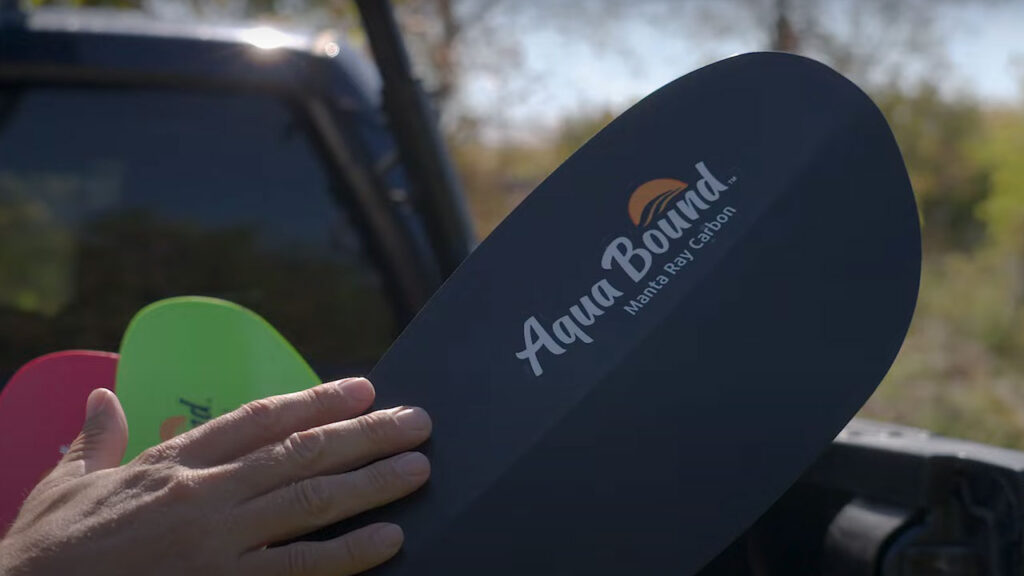
After paddling around with the upgraded Ray Series paddles for a couple of hours, I really didn't notice much of a difference from the previous blade designs. But since I loved these paddles before, that is in no way a bad thing. And considering that the prices stayed the same, any refinements, no matter how small, are still a bonus. For your own notes, here are the 4 changes that Aqua Bound made to the blades:
– A smoother, “flutter-free” forward stroke compared to previous generations
– Softened dihedral near the tip for a quieter entry and exit
– Reduced backside spine for greater technical stroke ability
– And improved strength (less likely to snap, crack or wear), without an increase in weight
Side Note Reminder About Ferrules:
What is the ferrule on a kayak paddle?
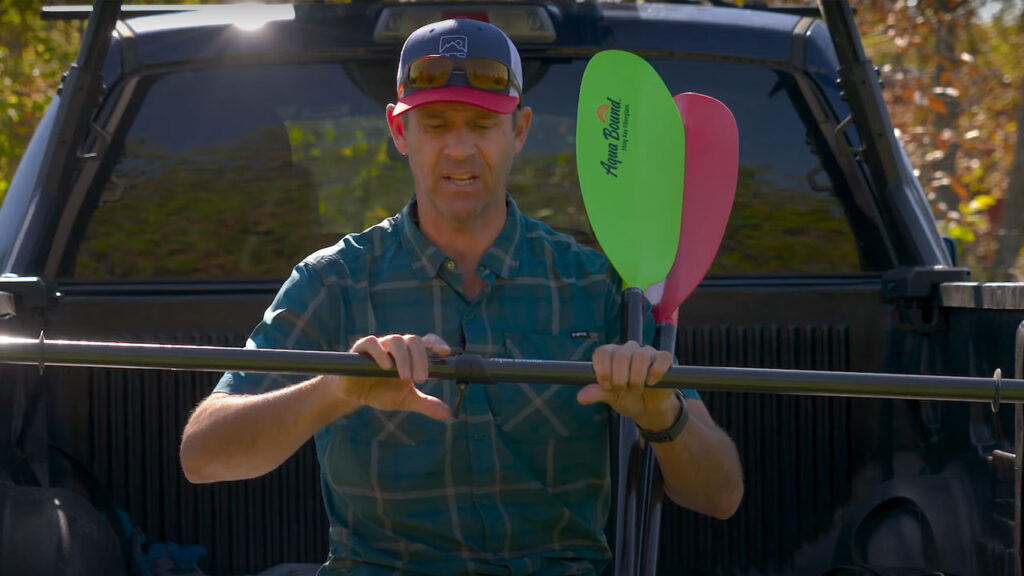
A ferrule is a fancy name for the connection point on a two-piece paddle. Nowadays, most paddles come with at least a two-piece construction because they're so much more convenient to transport. The most basic of the three common ferrules that you'll see is a snap-button system. The advantage here is a simple and cheap design.
The downsides are limited feather/twist options (more to come on this), they tend to get locked up with prolonged use (especially in saltwater), and there's always a bit of “give” or “play” that can be felt while paddling — not a lot, but enough to be a little annoying.
A locking ferrule works to eliminate that bit of movement at the joint. It also gives you a lot more freedom to customize the twist. The last ferrule type is a telescoping system. This one allows for adjustments in length, which is particularly helpful if you're someone who paddles different types of kayaks, or likes to share with fellow kayakers.
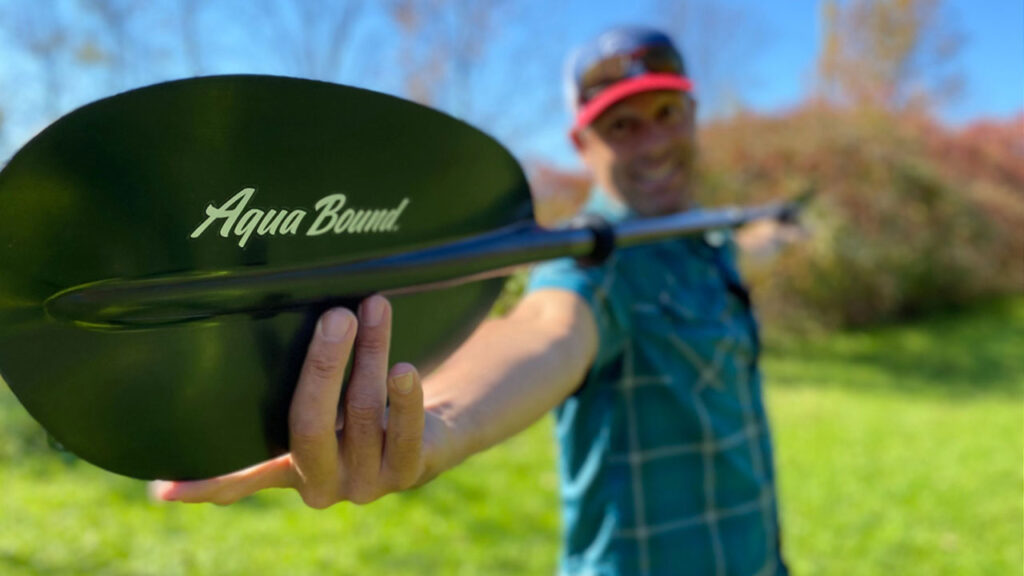
Why are kayak paddle blades angled?
Some paddles can be set to a certain “twist” or “feather.” Both of these terms refer to the offset, or angle of the paddle blades relative to one another. This is done so that while one blade is in the water, the other slices through the air with the narrow side of the blade, rather than the full, flat fin. If you're battling the wind, or racing another boat and need to claw for those fractions of a second, then this can be an effective strategy.
However, if you're just getting started, I think it's best to leave your paddle at a zero-offset/angle/twist/feather. I actually use a zero-offset paddle myself. 30 years ago, when I was just starting out, I initially had a 90-degree twist. Eventually I backed it off to a 60, and then a 30, 15, and finally I ditched it altogether.
Which Ray Series Paddle Is Right For You?
The fiberglass models (fiberglass shaft and fiberglass-reinforced nylon blades) are high-quality entry-level/budget-friendly choices. These are the heaviest and most flexible of the three categories, which means more cumulative fatigue and a less efficient stroke – but the plus side is they fall into that appealing $130 – $140 (USD) price range.
If you are someone who enjoys longer paddling days and has the budget to step up to a more advanced design, then the hybrid models might be something for you to consider. In these paddles, the shaft is made of carbon, which makes them lighter and stiffer. They also come with either the Posi-Lok or the newly implemented Versa-Lok ferrules – both of which improve the feel of the shaft and allow for customization.
And finally, the carbon models (made with carbon shafts and carbon-reinforced nylon blades) are the top-tier options for high-performance paddling. The carbon Ray paddles are the lightest and stiffest in the series, and of course come with both the Posi-Lok and Versa-Lok ferrule options. Even though these range in price from $225 – $245, that is still a fantastic price when considering that carbon paddles can retail for upwards of double that.
The beauty of the Ray Series paddles are that each price increment provides significant gains in terms of feel and performance. If you are a dedicated kayaker and have the budget to go for a full-carbon model, I highly recommend that you give it a shot.
How to choose a kayak paddle
When selecting a kayak paddle, it's important to consider the materials used, the shape of the blades, the length, the ferrule systems, what kind of paddling you aim to do, and of course, how all of these things fit into your budget. For a detailed guide on the ins and outs of choosing a paddle, check out this PaddleTV video.
Where are Aqua Bound paddles made?
Aqua Bound began operations in Surrey, British Columbia, Canada, in 1991, and moved down to Osceola, Wisconsin in 2008, where their paddles continue to be manufactured.
I hope you enjoyed my overview of the new Aqua Bound Ray Series. As I said in the beginning, I've been a fan of these paddles for a long time. I gave them two thumbs up before, and I give the latest versions two thumbs up as well! If you want to learn more about how to choose the right paddles, take in other gear reviews, or just watch me splash around in a lot of cool places, subscribe to our newsletter!
INFLATABLE AND FOLDING KAYAKS I RECOMMEND
FOOTWEAR
| Brand | Product | Our Review | Price | BUY NOW |
|---|---|---|---|---|
| NRS | Kicker Remix Shoe | 52.95 | Buy Here | |
| NRS | Boundry Boot | 104.95 | Buy Here |
PADDLING SHIRTS / TOPS
| Brand | Product | Our Review | Price | BUY NOW |
|---|---|---|---|---|
| NRS | Men's Guide Long Sleeve Shirt | Best Kayak Gear and Canoe Gear 2022 | 89.95 | Buy Here |
| NRS | H2Core Silkweight Shirt | 44.95 | Buy Here | |
| NRS | H2Core Silkweight Long Sleeve Shirt | 54.95 | Buy Here | |
| NRS | Hydroskin Short Sleeved Shirt | 94.95 | Buy Here | |
| NRS | Riptide Splash Jacket | 229.95 | Buy Here | |
| NRS | Benny Board Shorts | 64.95 | Buy Here | |
| NRS | Hydroskin Shorts | 74.95 | Buy Here | |
| NRS | Flux Dry Top | 399.95 | Buy Here | |
| NRS | Axiom Dry Suit | NRS Axiom Dry Suit Review: How do I choose a dry suit? | 1295 | Buy Here |
| Level Six | Emperor Dry Suit | Level Six Emperor Drysuit Review | 960 | Buy Here |
PFD’S – LIFE JACKETS
| Brand | Product | Our Review | Price | BUY NOW |
|---|---|---|---|---|
| NRS | Odyssey PFD | 149.95 | Buy Here | |
| NRS | Zen PFD | 229.95 | Buy Here |
OTHER PADDLING GEAR
| Brand | Product | Category | Our Review | Price | BUY NOW |
|---|---|---|---|---|---|
| Zoleo | Satellite Communicator | Navigation | Zoleo Satellite Communicator Review | 199 | Buy Here |
| NRS | Drylander Sprayskirt | Spray Skirts | 104.95 | Buy Here | |
| WRSI | Current Helmet | Helmet | 119.95 | Buy Here | |




